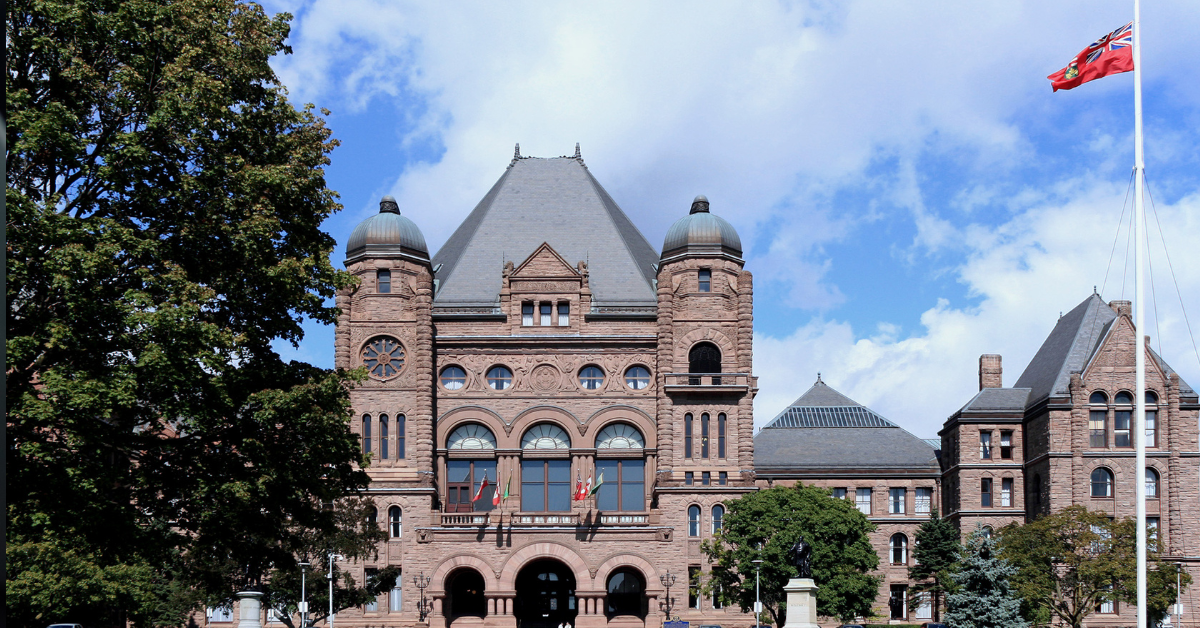The 2019 Budget, the last budget prior to the federal election later this fall, was tabled on March 19, 2019. In comparison to recent Budgets, from a tax legislation perspective, it was like riding a slow carousel in the KidsZone after disembarking from an 80mph twisting roller coaster!
In brief, the 2019 Budget includes $22.8 billion in new spending over the next five years. The government expects revenues to steadily increase by nearly $60 billion in 2023 and projects program spending to increase by $40 billion that year. Debt payments are projected to increase by $7 billion.
Based on these growth and spending assumptions, the government expects the federal deficit to increase to nearly $20 billion in 2019–2020 and 2020–21 and then decline to $9.8 billion at the end of the next five years.
Highlights include:
- A new, non-taxable Canada Training Credit for eligible workers aged 25 to 64
- A new Employment Insurance Training Support Benefit
- Increasing the RRSP withdrawal limit under the First-Time Home Buyers’ Plan
- Preferred capital gains tax treatment for owners of multi-unit residential properties
- Increased access to the enhanced 35 percent scientific research and experimental development tax credit
- Limits on the employee stock option deduction for large, long-established, mature companies
- Broadening the tax rules for certain registered plans to allow new types of annuities
- Changing the rules for Registered Disability Savings Plans to better protect the long-term savings of persons with disabilities
- Making zero-emission vehicles eligible for a 100 percent capital cost allowance rate in the year they are put in use
- Reallocating the CRA’s resources to improve digital services, provide more timely resolution to taxpayers’ objections, and adding CRA auditors to help new unincorporated businesses understand their tax obligations and extending the program to incorporated businesses
- Making a permanent dedicated CRA telephone support line for technical questions from tax practitioners
- Increasing CRA staff to reduce the time it takes to process T1 post-filing adjustments
- New CRA audit teams to detect and pursue complex real estate transactions where parties have not paid the required taxes
- Making Tax-Free Savings Account holders jointly and severally liable with their financial institutions for tax owing when using those accounts to carry on business
- There were no changes to corporate or personal income tax rates
Business Income Tax Measures
Scientific Research & Experimental Development (SR&ED)
Canadian-controlled private corporations (CCPCs) or associated groups of such corporations, are entitled to an enhanced (35 percent vs 15 percent) federal tax credit based on up to $3,000,000 of current SR&ED expenditures incurred in a taxation year (the “expenditure limit”), based on the following criteria:
- A full enhanced credit is available if the taxable income in the previous taxation year of the particular corporation or the associated group is $500,000 or less.
- $10 of the expenditure limit is lost (thereby eroding the enhanced credit) for every dollar of taxable income in the previous taxation year in excess of $500,000. The expenditure limit is reduced to zero if that taxable income exceeds $800,000.
The enhanced credit is also eroded if the corporation’s (or the group’s) “taxable capital employed in Canada” (essentially the aggregate of equity and debt) exceeds $10,000,000 and is eliminated if that taxable capital exceeds $50,000,000. The Budget proposes to remove the erosion that is based on taxable income. This proposal would apply to taxation years that end on or after March 19, 2019.
Small Business Deduction – Farming and Fishing
A CCPC is generally entitled to pay federal tax at the small business rate, which is currently 9 percent, on its first $500,000 of income from an active business carried on in Canada, provided that the $500,000 threshold is not reduced, nor the income in question restricted, under various rules of the Income Tax Act. Where income is not eligible for the small business deduction, a federal corporate tax rate of 15 percent would apply instead.
Enacted in 2016, one such restriction prohibits specified corporate income (SCI) of a CCPC from being taxed at the small business rate. SCI generally encompasses income that the CCPC derives from the provision of services or property to private corporations in which the CCPC or other certain persons hold a direct or indirect interest. However, since the inception of the SCI rules, certain income that a CCPC derives from sales to a farming or fishing cooperative corporation is excluded from the definition of SCI.
Budget 2019 proposes to broaden the above-mentioned exclusion from the SCI rules. In particular, the sale of the farming products or fishing catches would no longer need to be made to a farming or fishing cooperative corporation, but merely to an arm’s-length corporation. This measure will apply to taxation years beginning after March 21, 2016.
Zero-Emission Vehicles
The Budget proposes to introduce a temporary enhanced first-year CCA rate of 100 percent in respect of eligible zero-emission vehicles. These vehicles will be classified under one of two new CCA classes.
Class 54 will include zero-emission vehicles that would otherwise be included in Class 10 or 10.1. The amount on which CCA can be claimed is limited to a maximum of $55,000 plus sales taxes, per vehicle. Class 55 will include zero-emission vehicles that would otherwise be included in Class 16.
This measure will apply to eligible zero-emission vehicles acquired on or after March 19, 2019, and that become available for use before 2028, subject to a phase-out for vehicles that become available for use after 2023. The taxpayer must claim the enhanced CCA for the taxation year in which the vehicle first becomes available for use.
The Budget proposes to amend the GST/HST rules to ensure consistency with these measures. While this measure is certainly attractive for businesses, please keep in mind existing tax implications regarding the personal use of a business vehicle such as the standby charge.
Support for Canadian Journalism
The Budget proposes to introduce the following measures to support organizations that are “Qualified Canadian Journalism Organizations” (QCJOs).
Effective January 1, 2020, QCJOs will be allowed to register for tax-exempt status as “qualified donees” that can issue charitable receipts. A QCJO must be a corporation or trust whose activities relate exclusively to journalism, is controlled by arm’s-length persons and satisfies other conditions.
Retroactive to January 1, 2019, certain QCJOs will be eligible for a 25 percent refundable tax credit on remuneration paid to eligible newsroom employees. The remuneration eligible for the credit will be capped at $55,000 per year per employee. The QCJO must be a corporation, partnership or trust primarily engaged in the production of original written news content. Corporations must meet additional criteria.
Personal Income Tax Measures
Employee Stock Options
Employee stock options can receive preferential tax treatment. The employee has a taxable employment benefit equal to the excess of the fair market value of the shares acquired at the exercise date over the price paid under the option. If certain conditions are met, the employee will be eligible for a deduction of half the benefit effectively making the benefit half-taxable.
The Budget indicates the government’s intention to limit this preferential treatment (presumably the deduction for half the benefit). Specifically, the preferential treatment will only be available on shares acquired that fall under a cap for the year of grant. An annual cap of $200,000 has been set based on the fair market value of the shares that are the subject of the option. The Budget is silent on the date that the FMV is determined. It is intended that these changes would apply to employees of “large, long-established, mature firms.” Employees of start-up and rapidly growing businesses would be exempt from these rules. Additional details of this measure are expected to be released before the summer of 2019.
RRSP Home Buyer’s Plan
Under the RRSP Home Buyer’s Plan (HBP), a first-time home buyer can borrow up to $25,000 from their RRSP to help finance the purchase or construction of a home. In order to qualify as a first-time home buyer, neither the individual nor their spouse can have owned a home in the year or any of the four preceding years. The four-year requirement is waived where the purchase is for a more accessible or suitable home that will be occupied by an individual eligible for the disability credit. The Budget proposes to increase the maximum withdrawal per individual to $35,000 effective for withdrawals made after March 19, 2019. The Budget also modifies the HBP rules to better accommodate marital breakdowns.
Canada Training Credit
The Budget introduces the refundable Canada Training Credit (CTC). It is intended to provide financial support for professional development and training for working Canadians age 25 to 65. Eligible individuals will accumulate $250 per annum in a notional account which can be used to cover eligible training costs. The annual accumulation will start with the 2019 taxation year, with 2020 being the first year the CTC can be claimed.
In order to accumulate the $250 for a year, the individual must be age 25 to 64 at the end of the year, resident in Canada for the entire year, file a tax return for the year, have qualifying “working” income in the year of at least $10,000 (to be indexed annually) and have net income for tax purposes for the year of no more than the top of the third tax bracket for the year ($147,667 for 2019, indexed annually). Qualifying income includes employment income, self-employment income, maternity/parental Employment Insurance benefits and similar items. The $250 is still accumulated for years in which the CTC is claimed.
The amount of CTC that can be claimed will be the lesser of one-half of the eligible tuition and fees paid in respect of the year (generally those eligible for the tuition credit except that the educational institution must be in Canada) and the accumulated account balance at the beginning of the year not exceeding a lifetime maximum of $5,000. The individual will be able to claim the tuition credit on the eligible tuition and fees net of the CTC claimed. The individual must be resident in Canada throughout the year to be able to claim the CTC.
Donations of Cultural Property
When cultural property is donated to a qualifying institution, the donor receives a charitable donation tax receipt for the full fair market value of the property but is exempt from tax on the capital gain that would otherwise be taxable on the disposition of the property. In order to qualify for this treatment, the property must be of “national importance” to such a degree that its loss to Canada would significantly diminish the national heritage. A recent court case interpreted this test to mean that a direct connection of the property with Canada’s cultural heritage must exist. As a result, there is a concern that significant works of art of foreign origin, such as an “old masters” painting, would not be certified and thus not eligible for the preferential donation treatment. To address this concern, the Budget proposes to eliminate the national-importance requirement for donations made on or after March 19, 2019.
Registered Disability Savings Plans
A Registered Disability Savings Plan (RDSP) is a vehicle intended to assist a family in providing for the long-term financial security of a family member eligible for the disability tax credit (DTC). There are special rules that apply where the beneficiary for whom the RDSP was established ceases to be eligible for the DTC.
Currently, when DTC eligibility ceases, no further contributions to the RDSP can be made and no further Canada disability savings grants and bonds can be paid into the plan. The RDSP must be collapsed by the end of the first year following the first full year of DTC ineligibility, unless an election is made to extend the RDSP’s life. The life can be extended for four years if a medical practitioner certifies in writing that the beneficiary will once again become eligible for the DTC in the foreseeable future. During the election period, no further contributions can be made or grants received, but withdrawals can be made under the normal rules.
The Budget proposes to relax these rules for 2021 and later years. The life of the RDSP will be able to be extended indefinitely and the requirement for medical practitioner certification eliminated. A rollover of a deceased individual’s RRSP or RRIF to the RDSP of a financially dependent infirm child or grandchild will be permitted, as long as the rollover occurs by the end of the fourth calendar year following the first full year of DTC ineligibility.
Change in Use Rules for Multi-Unit Residential Properties
A taxpayer is deemed to have disposed of a property, or a part thereof, when its use is converted from income-earning to personal use, or vice versa. Under current rules, the taxpayer may elect to not have the deemed disposition occur in order to defer the taxation of any accrued capital gain until the time that the property is sold. In cases where only part of a property is converted, this election is unavailable.
The Budget proposes to extend the above-mentioned election to situations where only part of a property undergoes a change in use. For example, where a taxpayer owns a multi-unit residential property such as a triplex, if the taxpayer begins to live in one of the units previously rented, or vice versa, he or she can elect to not have the deemed disposition occur to that unit. This measure will apply to changes in use that occur on or after March 19, 2019.
Permitting Additional Types of Annuities Under Registered Plans
The Budget proposes to permit two new types of annuities to be purchased under certain registered plans, subject to specified conditions.
Firstly, “advanced life deferred annuities” (ALDAs) will be permitted, within limits, under a registered retirement savings plan, registered retirement income fund, deferred profit-sharing plan, pooled registered pension plan (PRPP), and defined-contribution registered pension plan. An ALDA is a life annuity whose commencement is deferred until the end of the year in which the annuitant turns 85.
Secondly, “variable payment life annuities” (VPLAs) will be permitted under a PRPP and defined-contribution RPP. A VPLA is a life annuity whose payments vary based on the investment performance of the underlying annuities fund and the mortality experience of VLPA annuitants. These measures will apply to the 2020 taxation year and beyond.
Digital Subscriptions Tax Credit
The Budget proposes a 15 percent non-refundable tax credit on up to $500 of costs for eligible digital subscriptions per annum, resulting in a maximum $75 annual credit. To be eligible, the amounts must be paid to a Qualified Canadian Journalism Organization (QCJO) for a subscription to digital form content of a QCJO. The QCJO must be primarily engaged in producing written content. A subscription with a broadcaster will not qualify. The credit will be available for amounts paid after 2019 and before 2025.
Donations of Cultural Property
When cultural property is donated to a qualifying institution, the donor receives a charitable donation tax receipt for the full fair market value of the property but is exempt from tax on the capital gain that would otherwise be taxable on the disposition of the property. In order to qualify for this treatment, the property must be of “national importance” to such a degree that its loss to Canada would significantly diminish the national heritage. A recent court case interpreted this test to mean that a direct connection of the property with Canada’s cultural heritage must exist. As a result, there is a concern that significant works of art of foreign origin, such as an “old masters” painting, would not be certified and thus not eligible for the preferential donation treatment. To address this concern, the Budget proposes to eliminate the national-importance requirement for donations made on or after March 19, 2019.
Medical Expense Tax Credit
The Budget proposes to amend the Income Tax Act to reflect the current regulations for accessing cannabis for medical purposes. This measure will apply to expenses incurred on or after October 17, 2018.
Carrying on Business in a Tax-Free Savings Account
A Tax-Free Savings Account (TFSA) is liable to pay tax under Part I of the Income Tax Act (at the top personal rate) on income from a business carried on by the TFSA or from non-qualified investments. Under the current rules, the trustee of the TFSA (i.e., a financial institution) is jointly and severally liable with the TFSA for Part I tax. The Budget proposes to extend the joint and several liability for that tax owing on income from carrying on a business in a TFSA to the holder of the TFSA. The joint and several liability of a trustee of a TFSA at any time in respect of business income earned by a TFSA will be limited to the property held in the TFSA at that time plus the amount of all distributions of property from the TFSA on or after the date that the notice of assessment is sent. This measure will apply to the 2019 and subsequent taxation years.
International Tax Measures
Foreign Affiliate Dumping
Foreign Affiliate Dumping rules were announced in 2011 to combat the tax-free extraction of surplus when a corporation resident in Canada (CRIC) that is controlled by a non-resident corporation, invests in a foreign affiliate. (Similar rules target loans made by a CRIC to non-arm’s-length non-resident members of a corporate group.) These rules generally deem that where a foreign affiliate is acquired by a CRIC (or the CRIC makes a loan to a non-arm’s-length non-resident), either the cross-border paid-up capital of the CRIC is suppressed (ground down), or a dividend is deemed to have been paid by the CRIC to the foreign parent corporation.
Currently, the rules only apply where the CRIC is controlled by a foreign corporation or group of foreign corporations. The Budget proposes to extend the rules to CRICs that are controlled by non-resident individuals and trusts or groups of persons that do not deal at arm’s-length with each other, that comprise any combination of non-resident corporations, individuals or trusts. For the purposes of determining if a non-resident trust is “related” and therefore not at arm’s-length with other parties, the trust will be deemed to be a corporation and the beneficiaries will be deemed to be shareholders that own shares pro-rata to the relative value of their beneficial interests in the trust. This measure will apply to transactions or events that occur on or after March 19, 2019
Transfer Pricing
Order of application of transfer-pricing rules
Transfer-pricing rules in the Income Tax Act generally provide that, where a Canadian taxpayer transacts with non-arm’s-length parties outside Canada, the price used for the transaction must be established using the arms’-length principle. That is, the parties must establish a price that is within the range that arms’-length third parties would have used had they transacted under the same terms and conditions. The Income Tax Act contains other provisions which may require adjustment to the income reported on a transaction.
The Budget proposes that the transfer-pricing adjustments shall apply in priority to any other adjustments required under the Act. Presumably, any applicable transfer-pricing penalties will apply in these situations. Current exceptions to the transfer-pricing rules (for example subsection 17(8) which permits certain zero or low interest loans made to controlled foreign affiliates) are retained. This measure applies to taxation years commencing after March 19, 2019.
Reassessment period for transfer-pricing “transactions”
The Budget proposes to use the expanded definition of “transaction” within the Income Tax Act in determining whether a transaction can be reassessed in the extended three-year reassessment period regarding transfer-pricing adjustments. This measure applies to taxation years for which the normal reassessment period ends on or after March 19, 2019, meaning it applies to most transactions that have occurred in the last three to four years.
Cross-Border Securities Lending
Securities lending occurs commonly in our capital markets, often seen when investors wish to short-sell securities that are expected to decrease in value. For example, a Canadian resident might borrow the shares of a public company from a non-resident lender. The Canadian would be required to make compensatory payments to the lender equal to any dividends paid on the borrowed shares and might be required to post collateral to secure the return of identical shares to the lender. If the borrowing is “fully” collateralized (defined to mean at least 95 percent of the value of the borrowed security is collateralized with money or government debt obligations) the compensatory payment is considered a dividend and is subject to the normal dividend withholding taxes. When not fully collateralized, the compensatory payment is treated as a payment of interest, which is not subject to withholding tax if paid to arm’s-length parties. The Act contains rules intended to ensure the lender is in the same tax position as if the securities had not been lent, including with regards to Canadian withholding taxes on compensatory payments.
Canadian securities
Where the borrowed security is a share of a Canadian corporation, the Budget proposes to treat all compensatory payments as dividends (regardless of whether fully collateralized). Thus, the dividend withholding rules will come into effect. The Budget also expands the application of these rules to “specified securities lending arrangements,” a concept introduced in 2018 to prevent the creation of artificial losses.
Foreign securities
Where the borrowed security is a share of a non-resident issuer (a foreign corporation), the current rules require withholding tax on the compensatory dividend payment. However, the non-resident lender would not have been subject to Canadian withholding tax on receipt of a dividend from the non-resident issuer corporation. As a relieving provision, the Budget proposes to expand the exemption for withholding to any dividend compensatory payment paid by a Canadian resident borrower to a non-resident lender where the arrangement is fully (95 percent) collateralized.
These new rules apply to payments made after March 19, 2019. For securities loans in place on March 19, 2019, the amendments apply to compensatory payments made after September 2019.
Sales Tax Measures
Human OVA and In Vitro Embryos
The Budget proposes to extend GST/HST relief for human ova and in vitro embryos. It is proposed that supplies and imports of human ova be relieved of the GST/HST and that imports of human in vitro embryos also be relieved of the GST/HST. This measure applies to supplies and imports of human ova and to imports of human in vitro embryos made after March 19, 2019.
Foot-Care Devices Supplied by Order of a Podiatrist or Chiropodist
The Budget proposes to add licensed podiatrists and chiropodists to the list of practitioners on whose order supplies of foot-care devices are zero-rated. This measure will apply to supplies of foot-care devices made after March 19, 2019.
Multidisciplinary Health-Care Services
The Budget proposes to exempt from the GST/HST, the supply of a service rendered by a team of health professionals, such as doctors, physiotherapists and occupational therapists, whose services are GST/HST-exempt when supplied separately. This measure applies to supplies of multidisciplinary health services made after March 19, 2019.
Administrative Matters
Improving Tax Compliance
The Budget proposes additional investments to strengthen the capabilities of the CRA. This includes investing an additional $150.8 million over five years, starting in 2019-20. In addition, the Budget also proposes to invest $65.8 million over five years to improve the CRA’s information technology systems to be better suited to fight tax evasion and aggressive tax avoidance.
Electronic Demands for Information by CRA
Both the Income Tax Act and Excise Tax Act provide CRA the power to serve notice on taxpayers and non-residents that carry on business in Canada, requiring production of information, including foreign-based information. The CRA may also demand third-party information from institutions such as financial institutions. The current rules generally require the Minister to personally serve or to send by registered mail the notice demanding the information. The Budget proposes to permit the CRA to serve such notice electronically to a bank or credit union that has provided consent to receive such notices electronically. These measures are applicable to both the Income Tax and Excise Tax Acts and come into force January 1, 2020.
Previously Announced Income Tax Measures
Budget 2019 confirms the government’s intention to proceed with previously announced income tax measures. Some of the key measures are summarized below.
Measures from the Fall Economic Statement
In its November 21, 2018, Fall Economic Statement, the government announced several income tax measures including the Accelerated Investment Incentive, full expensing for manufacturing and processing equipment, and full expensing for clean energy equipment. These measures were discussed in our January 2, 2019 blog post covering the 2018 Fall Economic Statement tax measures.
Trusts – Reporting Requirements
Budget 2018 proposed extensive new reporting requirement for most family trusts, effective for returns required to be filed for 2021 taxation years. This measure was covered in our March 1, 2018 blog post regarding the 2018 Federal Budget.
Intergenerational Business Transfers
The government will continue its initiative to develop new proposals to ensure that intergenerational transfers of businesses are better accommodated under the tax system. Budget 2019 specifically mentions Canadian farmers and fishers, but adds that this initiative also applies to other types of business owners.
We Can Help
The team at Bateman MacKay LLP can help you determine the impact of the tax changes in this year’s federal budget on your business or personal finances and look for ways to take advantage of the changes or reduce their impact.





